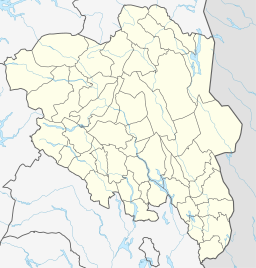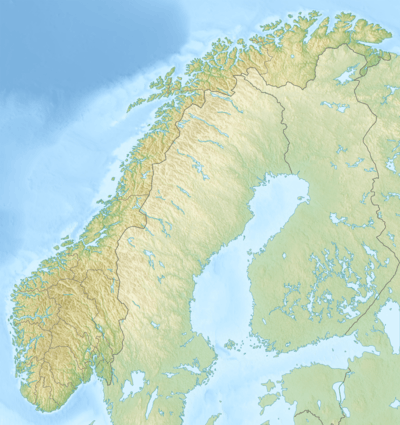Kvitfjell
Kvitfjell (Norwegian: White mountain) is a ski resort in Norway, located in the municipality of Ringebu.
| Kvitfjell | |
|---|---|
 Kvitfjell in April 2010 | |
 Kvitfjell Location in Norway  Kvitfjell Kvitfjell (Norway) | |
| Location | Ringebu, Innlandet, Norway |
| Nearest major city | Lillehammer: 55 km (34 mi) |
| Coordinates | 61.45°N 10.12°E |
| Vertical | 854 m (2,802 ft) |
| Top elevation | 1,039 m (3,409 ft) |
| Base elevation | 185 m (607 ft) |
| Runs | 23 pistes |
| Longest run | 3.5 km (2.2 mi) |
| Lift system | 9 total - 3 chairlifts - 2 T-bars - 3 telescopic lifts - 1 belt lift |
| Lift capacity | 11,300 / hr |
| Terrain parks | 1 |
| Snowfall | low |
| Snowmaking | 80% of pistes[1] |
| Night skiing | Tue, Thu (Dec), & Fri until 8 pm, 2.6 km (1.6 mi) |
| Website | Kvitfjell.no |
Developed for the 1994 Winter Olympics in Lillehammer, it is one of the most modern resorts in the world, with snowmaking on 80% of the alpine pistes. Based near the river Gudbrandsdalslågen, the resort offers 23 pistes: 5 green (nursery), 9 blue (beginner), 6 red (intermediate), and 3 black (advanced).[2] Kvitfjell is also home to a terrain park and 120 km (75 mi) of cross-country pistes, with access to 480 km (300 mi) extra in Skei and Gålå.
Alpine ski racing
1994 Winter Olympics
Kvitfjell is probably best known for hosting the men's and women's alpine speed events at the 1994 Winter Olympics.[3] Tommy Moe, an American of Norwegian descent, edged out home favorite Kjetil André Aamodt of Norway by 0.04 seconds in the downhill,[4][5] then was edged out by Markus Wasmeier of Germany by 0.08 seconds in the Super G.
Katja Seizinger of Germany won the women's downhill with Picabo Street of the U.S. a distant second; Diann Roffe of the U.S. took gold in the Super G. The technical alpine events (giant slalom and slalom) were held at Hafjell.
World Cup
Kvitfjell is a regular stop on the World Cup circuit, hosting men's speed events late in the season, and debuted in March 1993. The downhill course begins just below the summit and is slightly over 3 km (1.9 mi) in length.[6] Designed by Bernhard Russi for the 1994 Olympics, the challenging Olympiabakken course is well-regarded; after the Olympics, men's World Cup races have been held here every year since,[7] through 2020.
References
- Kvitfjell.no Archived 2012-08-03 at Archive.today - facts - accessed 2010-02-22
- "www.kvitfjell.no brochure" (PDF). Archived from the original (PDF) on 2007-09-29. Retrieved 2007-01-09.
- 1994 Winter Olympics official report. Archived 2010-12-02 at the Wayback Machine Volume 3. pp. 47-50.
- "Americans just say Moe". Spokesman-Review. (Spokane, Washington). Associated Press. February 14, 1994. p. C1.
- Johnson, William Oscar (February 21, 1994). "The Son Finally Rises". Sports Illustrated. p. 20.
- "Kvitfjell: World Cup downhill results" (PDF). FIS. March 3, 2012.
- "Kvitfjell - World Cup events". FIS-ski.com. Retrieved 19 January 2016.
External links
- Official website (in English and Norwegian)
- Piste Maps - Kvitfjell
